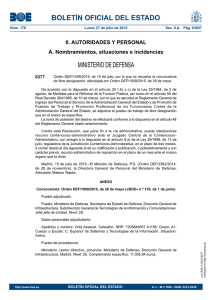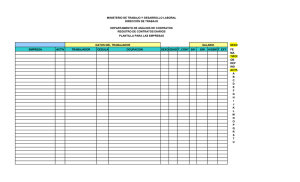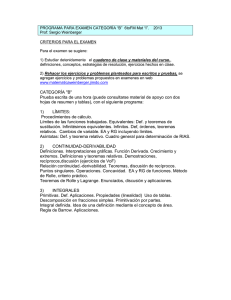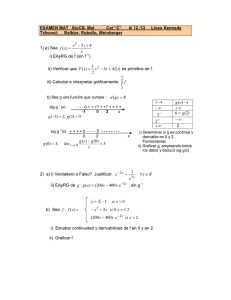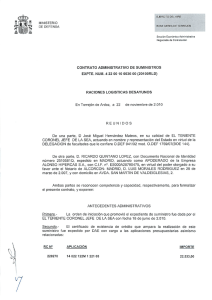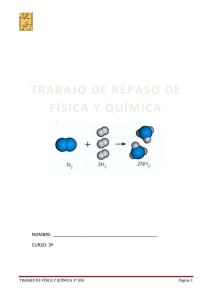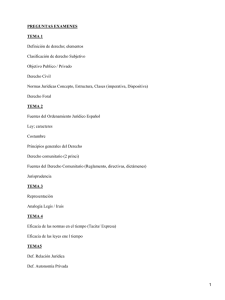Valor absoluto - x.edu.uy Matematica
Anuncio
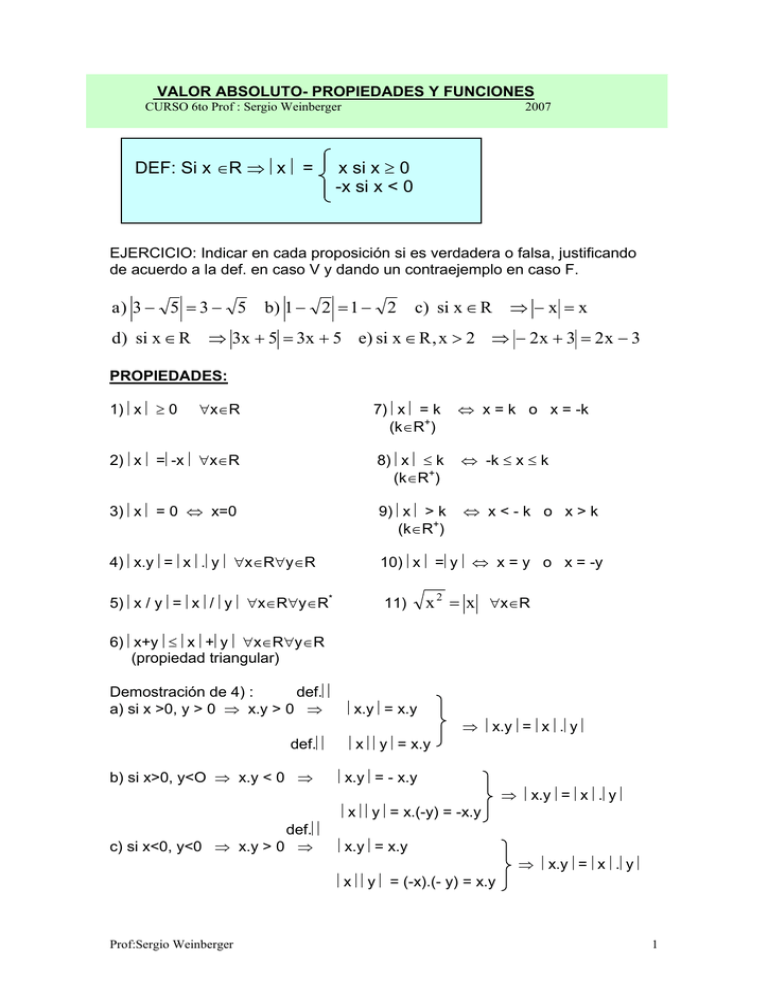
VALOR ABSOLUTO- PROPIEDADES Y FUNCIONES CURSO 6to Prof : Sergio Weinberger DEF: Si x ∈R ⇒ x = 2007 x si x ≥ 0 -x si x < 0 EJERCICIO: Indicar en cada proposición si es verdadera o falsa, justificando de acuerdo a la def. en caso V y dando un contraejemplo en caso F. a) 3 − 5 = 3 − 5 b) 1 − 2 = 1 − 2 c) si x ∈ R ⇒ − x = x d ) si x ∈ R ⇒ 3x + 5 = 3x + 5 e) si x ∈ R , x > 2 ⇒ − 2 x + 3 = 2 x − 3 PROPIEDADES: 1) x ≥ 0 ∀x∈R 7) x = k (k∈R+) ⇔ x = k o x = -k 2) x =-x ∀x∈R 8) x ≤ k (k∈R+) ⇔ -k ≤ x ≤ k 3) x = 0 ⇔ x=0 9) x > k (k∈R+) ⇔ x<-k o x>k 4) x.y = x .y ∀x∈R∀y∈R 10) x =y ⇔ x = y o x = -y 5) x / y = x / y ∀x∈R∀y∈R* 11) x 2 = x ∀x∈R 6) x+y ≤ x +y ∀x∈R∀y∈R (propiedad triangular) Demostración de 4) : def. a) si x >0, y > 0 ⇒ x.y > 0 ⇒ x.y = x.y ⇒ x.y = x .y def. b) si x>0, y<O ⇒ x.y < 0 ⇒ x y = x.y x.y = - x.y ⇒ x.y = x .y x y = x.(-y) = -x.y def. c) si x<0, y<0 ⇒ x.y > 0 ⇒ x.y = x.y ⇒ x.y = x .y x y = (-x).(- y) = x.y Prof:Sergio Weinberger 1 d) si x=0 y/o y=0 ⇒ la igualdad es obvia. Demostración de 5) : a cargo del lector. Demostración de 6) : def. a) si x >0, y > 0 ⇒ x+y > 0 ⇒ x.+y = x+y ⇒ x+y = x + y x + y = x+y b) si x<0, y<0 ⇒ x+y < 0 ⇒ x+y = - x-y ⇒ x+y = x +y x + y = (-x)+(- y) = - x- y c) si x>0, y<O ⇒ def. c1) x+y ≥ 0 ⇒ x+y = x + y ⇒ x+y < x +y x + y = x - y y<o ⇒ -y > o ⇒ y< -y ⇒ x+y< x-y monotonía def. c2) x+y < 0 ⇒ x+y = - x - y ⇒ x+y < x +y x + y = x - y x>0 ⇒ -x < o ⇒ -x< x ⇒ - x-y< x-y monotonía d) si x=0 y/o y=0 ⇒ se cumple la igualdad. APLICACIONES DE LAS PROPIEDADES 7 A 10: RESOLVER : prop.7 A) 3x-1 = 2 ⇔ 3x-1= -2 ⇒ x = -1/3 o 3x-1= 2 ⇒ x = 1 B) - 4x+2< 1 prop.8 ⇔ - 1 < - 4x+2 < 1 ⇔ - 3 < - 4x < - 1 ⇔ ¾ > x > ¼ ⇒ S = (1/4,3/4) Prof:Sergio Weinberger 2 FUNCIÓN VALOR ABSOLUTO Estudiaremos la función f : f (x) = x Raíces o ceros : por prop.2) : única raíz cero Por prop.1) : sig. x ++++++0++++++++++ 0 x Gráfica . De acuerdo a la def.: y y=- x y=x Observación : La gráfica puede obtenerse graficando la función “sin valor absoluto” : g(x)=x, simetrizando la parte de g(x)<0 respecto al eje Ox.. x En general, conociendo la gráfica de una función f, podemos obtener la de f(x) , dejando inmodificada la parte correspondiente a f(x)>0 y simetrizando respecto a Ox la parte correspondiente a f(x)<0. y f(x) 0 f(x) Prof:Sergio Weinberger x 3 Ejemplos: 1) f : f ( x ) = 2 x + 1 Teniendo en cuenta las propiedades vistas, el signo de f(x) es : sig 2x + 1 + + + + + + 0 + + + + + + + 1 − 2 Para graficar, con el criterio anterior, graficamos y=2x+1, haciéndole las transformaciones correspondientes: y=2x+1 1 -1 -1/2 0 FUNCIONES DEFINIDAS POR ZONAS 2 2) f : f ( x ) = x − x + 2 x En este caso no podemos aplicar el criterio anterior pues hay expresión fuera del valor absoluto. Se empleará entonces la definición de valor 2 absoluto, para lo cual deberá estudiarse el signo de x − x : 2 sig ( x − x ) + + + + + + 0 - - - - - 0 + + + + + + + 0 1 Esto nos permite expresar f(x) en cada una de las zonas que establece el signo: f ( x ) x 2 − x +2x = x 2 + x 0 Prof:Sergio Weinberger x2 + x − x 2 + x + 2 x = - x 2 + 3x 1 4 De acuerdo a la gráfica deducimos : sig f(x) + + + + + + + 0 - - - - - 0 + + + + + + + + + + + -1 Prof:Sergio Weinberger 0 x 5
